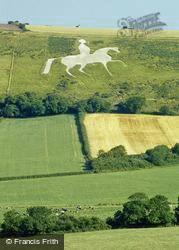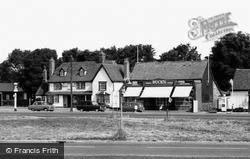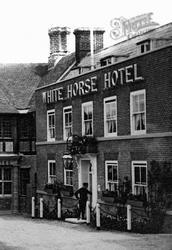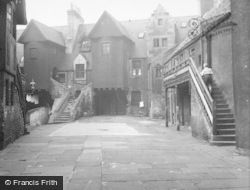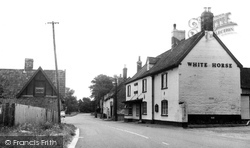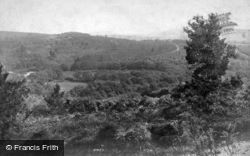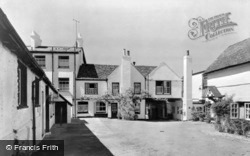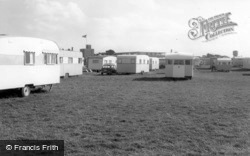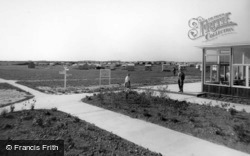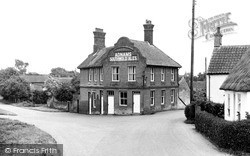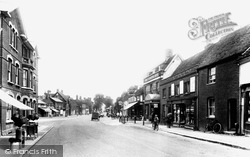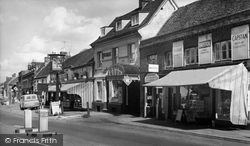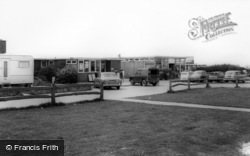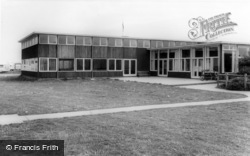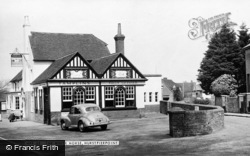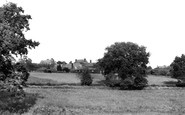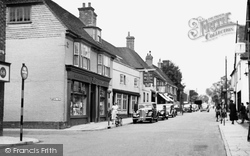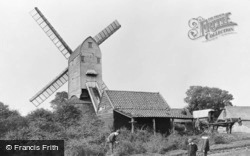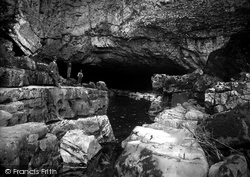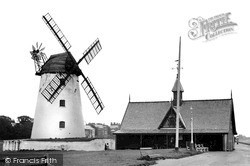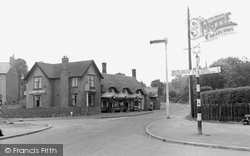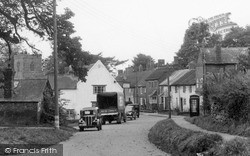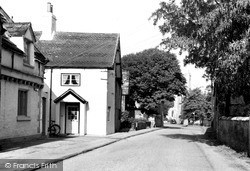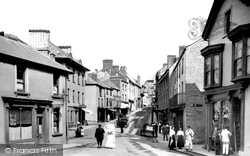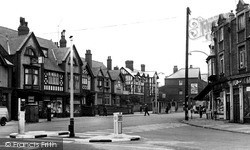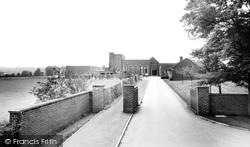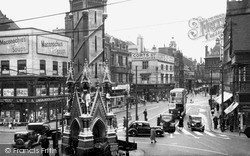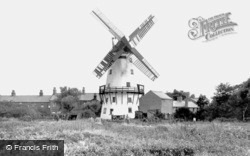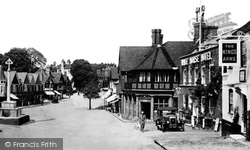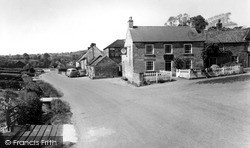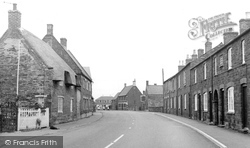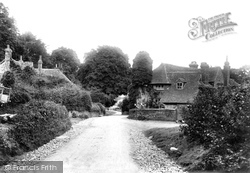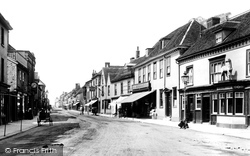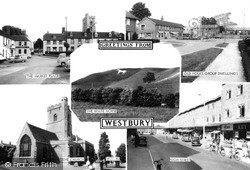Places
2 places found.
Those places high-lighted have photos. All locations may have maps, books and memories.
Photos
232 photos found. Showing results 81 to 100.
Maps
34 maps found.
Books
Sorry, no books were found that related to your search.
Memories
469 memories found. Showing results 41 to 50.
Old Southall Remembered
I lived in old Southall (Norwood Road - Norwood Green end) during the 1960s to the 1990s and have seen great changes. I went to school at Clifton Road, and the school had a great Headmaster, Mr Hancock, for a while. One ...Read more
A memory of Southall
My Beloved Bonk
I have loads of memories of village life as a kid. I was born in 1961 and still live on the Bonk. I will probably die here as well. There were many old characters back then. Iron Bates the vegetable cart man (did some boxing ...Read more
A memory of Cheslyn Hay in 1969 by
White House
I was born in Bladon in 1954 and the pub in mention was called the White House, I would think the pronounciation if I have spelt it right was in the locals West Oxon way of speach and White Horse can sound the same.
A memory of Bladon in 1954 by
Love That Place!
Born at Petersfield in 1940, my first home was Berry Cottage, down Sandy Lane, opposite Sibley's farm. Berry cottage had only 4 rooms (2 up and 2 down), no running water, only a well and later a tap down in the lane. I remember ...Read more
A memory of Rake Firs in 1940 by
Growing Up In Easebourne
I went to live in Cowdray House, aged 4, in 1951. My father worked in the accounts office in Easebourne village, and I attended Easebourne Primary School (Headmaster was Mr Bevan) along with Barbara Fisher, who also ...Read more
A memory of Easebourne in 1956 by
Church Gate (60s 70s)
My grandparents (Mousleys) lived in 38 Church Street and that was the house where my mother was brought up during the Second World War and onwards. I remember staying there as a small boy: no inside toilet, an old hand ...Read more
A memory of Lutterworth
Dunsmore People And Happenings Remembered
PREFACE TO THE SECOND EDITION In 1995, when the first edition of this history was published, it seemed incredibly optimistic to have had three hundred copies printed for a market which ...Read more
A memory of Dunsmore by
The 1950s
Though I have some recall of the 1940s - eg starting school in 1948 at the age of three and a half and being reluctant to get off a rocking horse on the first day, it was the 1950s that really kicked in - to the accompaniment of songs ...Read more
A memory of Corwen in 1950 by
Some Childhood Years In Sorbie 1932 T0 1937
The family moved from Reay in Caithness to Sorbie in 1932 - I was 2 years old and had a sister who was 12 years old and a brother, 10 years old, so there was a huge difference in ages and I was brought up ...Read more
A memory of Sorbie in 1930 by
Bad Memories
I was in the Sanatorium, the children's section, aged seven in 1949 suffering from TB, my mother was sent there the following year and stayed in the woman's section, also with TB, and unfortunately she died there after just a ...Read more
A memory of Chandler's Ford in 1949 by
Captions
173 captions found. Showing results 97 to 120.
The intervening space up to Roman Bank was taken up by horse pastures and allotments.
The signboard of the White Horse pub, across the road, advertises the availability of the locally-brewed Westerham ales.
This is an East Anglian-style post mill with a white-painted weatherboarded body, four spring patent shuttered sails and winded manually by a tailpole.
Actually this picture was taken a mile south of the hamlet of Ystradfellte at the place where the River Mellte tumbles into the dark mouth of this cave, which in English means White Horse Cave.
The white windmill, built by Richard Cookson in 1805, was in working order until 1918, when the fire damaged it.
With the wrought iron gate and lantern frame in front of us, we look northwards towards Bourne Close and eventually, by a footpath across the fields, to Moles Farm and the Sow and Pigs public house at
These stories might have been about the 'fine lady upon a white horse' who rode her 'Cock horse to Banbury Cross' (possibly Celia Fiennes); or about the infamous Dick Turpin, who apparently visited
Frith's photographer has moved into the High Street and is looking south towards The White Horse pub - which is little changed today.
Modern housing now covers most of the old estate and nursery, and only the name remains in street signs.
The motor car is not yet a common sight, hence the horse-drawn carts going about their business.
The large black and white half-timbered building, with the bus stops outside, is the Black Horse Inn, which still stands.
It has grounds of about 35 acres, with splendid views of the Downs and the White Horse. It became a comprehensive in 1974, merging with the Fynamore Secondary Modern School.
The pinnacled and canopied Clock Tower, designed by Joseph Goddard in 1868, dominates the forefront of the photograph, while its four stoney local worthies, Simon de Montfort, William Wyggeston,
The pure white marble angel (centre left) is seen by all who pass through the Trough of Bowland.
Officially described as a `drinking fountain for horses, cattle and dogs`, it became known as the Angel, owing to the 15ft-high white Sicilian marble statue on a Yorkshire stone base.
Alongside the mill was T Kirkham's blacksmith's shop; horses were brought here through Atkinson's fields. In the yard was also Jack Breckell's wheelwright's shop.
An 18th-century house incorporating Trowell Stores (advertising Brooke Bond Tea) and the White Horse Inn selling Tolly ales and stout face the square.
When the railway finally opened in January 1859, a celebratory dinner was held at the White Horse Hotel (next door).
The White Horse, a chalk hill figure, was carved in 1857. It is still a major attraction and can be seen for miles. The church of St Mary, off to the right, dates from 1120, with a tower of 1667.
The White Hart pub (centre right) sits at right angles to the street, but the inevitable 20th-century interloper of considerably lesser architectural merit can be seen in the distance.
This view looks north-east along the A283 past its junction with Church Lane on the right in front of White Horse Cottage, whose chimney stack is here covered in creeper.
On the right is the White Horse, run by George Rampling; next door is Boggis's the drapers in the 18th-century building with dormer windows; then comes William Alston's 'Second Hand Furniture Warehouse
The White Hart pub (centre right) sits at right angles to the street, but the inevitable 20th-century interloper of considerably lesser architectural merit can be seen in the distance.
The town's identity is linked to the magnificent white horse cut into the chalk hillside, a landmark which guides the traveller.
Places (2)
Photos (232)
Memories (469)
Books (0)
Maps (34)


